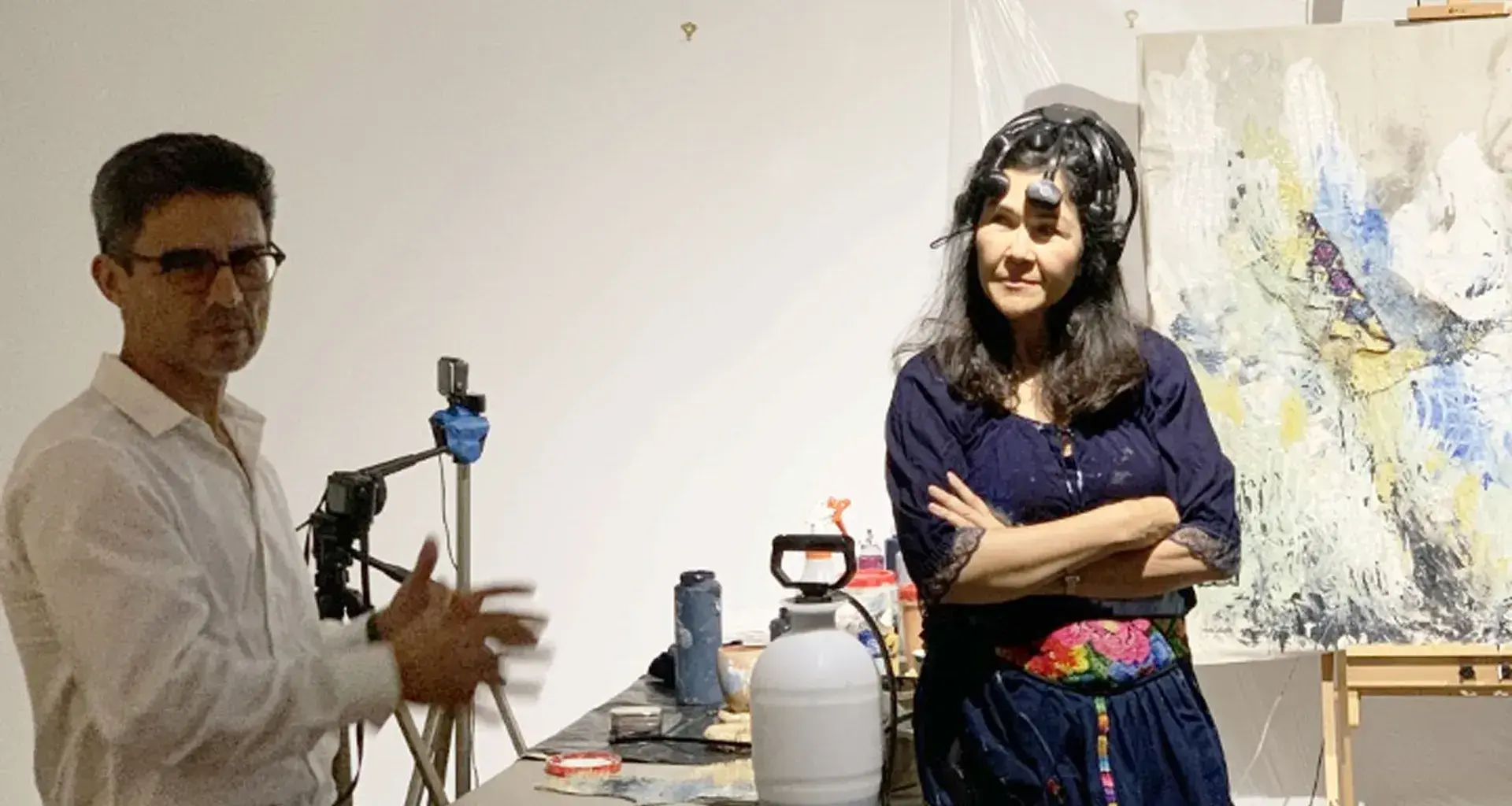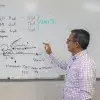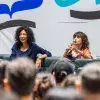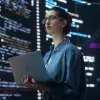“Works of art don’t just have value as entertainment and esthetic expression; they also externalize aspects of human cognition that would otherwise remain hidden.”
With that idea as a starting point, neuroscientist José Luis Contreras-Vidal proposed a new way of understanding creativity, based on neuroscience, technology, and the humanities.
The University of Houston professor and Tec graduate shared pioneering research with Tec faculty that integrates brain-computer interfaces (BCIs), artificial intelligence, and art to understand what happens in the brain when people create and how to implement that in the classroom.
This took place during his keynote speech, “Neurohumanities: Educating with Connected Science, Art, and Technology,” at Tec de Monterrey’s 2025 National Faculty Summit.
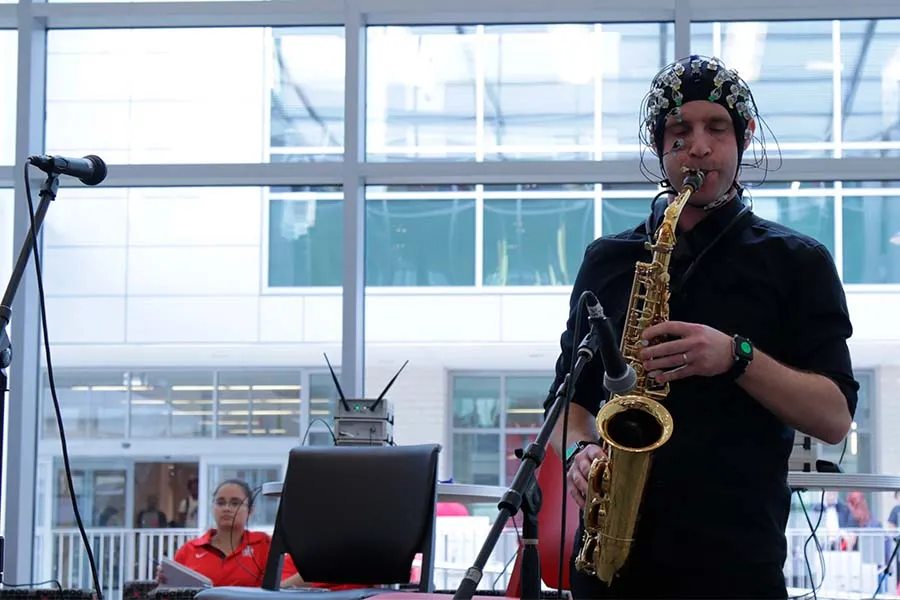
Seeing an artist’s creativity in real time
According to José Luis Contreras, movement, music, and dance are not only artistic expressions but also offer a window into the human brain, into emotions, creativity, and social interactions.
In collaboration with musicians, dancers, and visual artists, he has developed performances where the audience can see the performers’ brain activity in real time.
In the Windows into the Creative Mind project, the brains of a pianist and a conductor were displayed via digital projections as they played a series of musical variations.
“This was the first time an audience was able to visualize creativity; in this case, the degree of brain synchrony between the musicians.”
“Works of art don’t just entertain; they also externalize aspects of human cognition that would otherwise remain hidden.” - José Luis Contreras-Vidal
Another case was in Bali, where they recorded the activity of a traditional dancer and a drummer.
They integrated the most ancient cultural traditions with the newest technologies in an artistic performance that fused the spiritual, the esthetic, and the scientific.
The data collected has shown, for example, how brain synchrony between musicians during a live performance changes depending on creative intent and environmental conditions.
He has also documented how brain-computer interfaces can promote neuroplasticity, the brain’s ability to adapt and learn, in both artistic processes and neurological rehabilitation.
According to the researcher, seeing the creative brain in action, in real-life settings such as concerts, museums, or dance rehearsals, allows us to overcome the limitations of traditional laboratory experiments, which often isolate people from their social and emotional context.
This is because, according to José Luis, “Creativity is deeply contextual, social, and emotional.” It can only be fully understood in action and in community.
Among his conclusions, he highlights that this type of research doesn’t just expand our understanding of the brain.
It also opens up opportunities in health, education, and the development of more humane technologies.
“These (AI) models are simple statistical approximations of the brain. Creativity is social, emotional, and contextual.” - José Luis Contreras-Vidal
“Works of art don’t just entertain; they also externalize aspects of human cognition that would otherwise remain hidden.”
As part of this global effort, he launched the international Movement, Music and Brain Health AccelNet network, funded by the National Science Foundation.
Its goal is to accelerate research at the intersection of neuroscience, AI, and the performing arts, and to integrate researchers, students, and artists from around the world.
Tecnológico de Monterrey is now an international affiliate of the Brain Center.
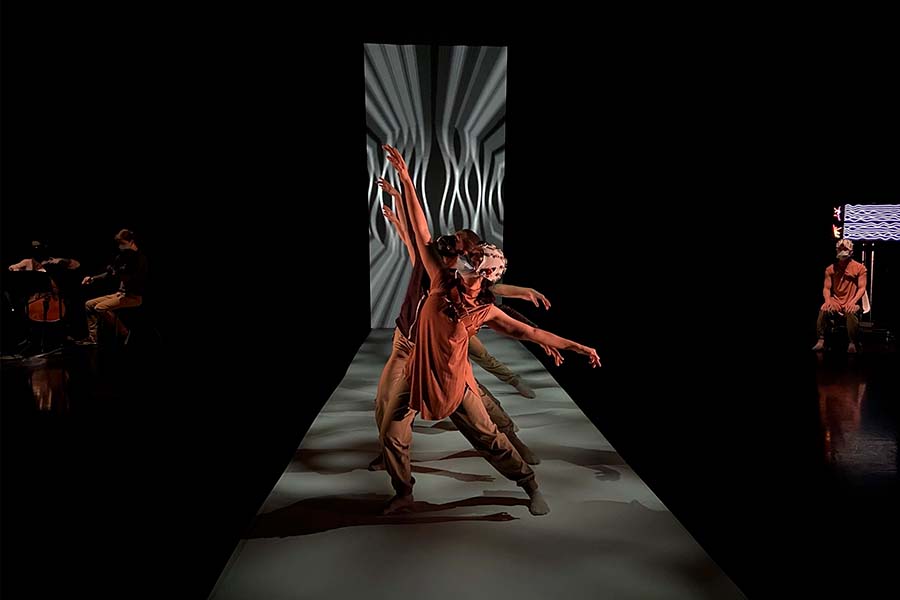
How can we implement neurohumanities in the classroom?
In addition to sharing his research, the professor discussed how to translate this interdisciplinary approach into real-world educational contexts.
For him, the key is to build diverse and collaborative teams, where students at different levels from high school to graduate school work alongside teachers, artists, scientists, engineers, designers, and humanities experts.
“It’s very important to have a team that covers all these disciplinary areas.” He said this was because precisely this combination of profiles allows for the development of projects with a comprehensive vision.
In his experience, each student should have a specific responsibility within the project, with the freedom to propose, experiment, and learn from mistakes.
Contact with the public: Another central piece of his educational model
Students present their research at museums, festivals, schools, or community centers, and are required to explain their work to non-specialist audiences.
“Answering questions from the audience, even from children, is a very important part of what we do.”
According to the researcher, this not only strengthens their communication skills but also connects science with society.
As for the criteria for integrating students into their projects, the key is working together with a diversity of knowledge:
“What’s important isn’t which discipline the students come from but their commitment and motivation. They always bring something new to the team.”
“I only ask for two things: commitment and motivation.”
According to the researcher, technical knowledge can be learned in teams but what enriches projects is a diversity of perspectives and a genuine desire to participate.
At the end of the talk, certain teachers had the opportunity to ask him a few questions.
One of them asked him if artificial intelligence could match or surpass human creativity.
The professor replied: “These models are simple statistical approximations of the brain. Creativity is social, emotional, and contextual. They must be used with caution, understanding their limitations.”
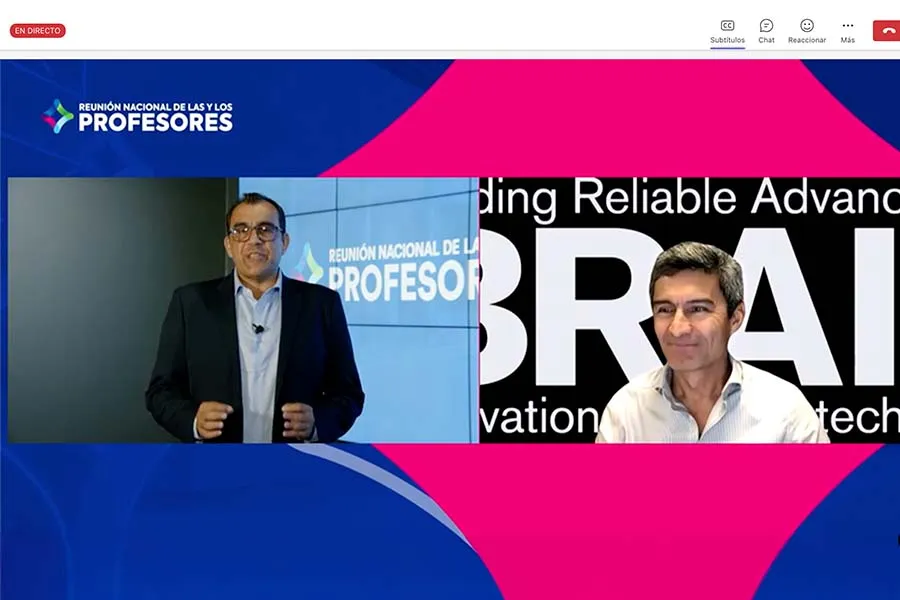
About José Contreras-Vidal
- Hugh Roy and Lillie Cranz Cullen Distinguished Professor of Electrical and Computer Engineering, University of Houston
- Director of IUCRC BRAIN (NSF Industry-University Cooperative Research Center for Building Reliable Advances and Innovations in Neurotechnology)
- Member of the NIH’s National Advisory Board on Medical Rehabilitation Research (NABMRR).
Formal education
- Tecnológico de Monterrey, University of Colorado-Boulder, and Boston University graduate.
- Postdoctoral training in computational neuroscience at Arizona State University and the University of Freiburg.
- Sabbatical research stay at the Pierre et Marie Curie University (Paris).
Accolades and accomplishments
- Fellow of the IEEE and the AIMBE
- Recognized for his pioneering work on brain-machine interfaces and for mapping art-evoked brain activity
Outstanding contributions and collaborations
- He has opened new avenues for studying the neural basis of creativity, social interaction, and personalized art.
- Contreras-Vidal has collaborated with artists such as Tony Brandt and the company Noble Motion Dance.
- He integrates neurotechnology into real-time artistic performances.
Awards and publications
- Winner of Chamber Music America’s 2025 Interdisciplinary Collaboration of the Year for Meeting of Minds
- Editor of the Springer book on Mobile Brain-Body Imaging.
- Co-chaired the 2022 International Workshop on the Social and Neural Basis of Creative Movement.
- His research has been funded by prestigious institutions and published in journals such as Nature, Science, and The Economist.
About the 2025 National Faculty Summit
The National Faculty Summit is the annual meeting of Tec de Monterrey’s Higher Education academic community, offering opportunities for learning, institutional alignment, roundtable discussions, and moments of celebration.
This year, it was held in a hybrid format, with two days of online talks and workshops and two days of face-to-face sessions at the Monterrey campus with the theme From our Faculty: Building Bridges to the Future.
“It’s a year in which we’ve promoted key projects on our path to 2030 and our shared goal of attracting the most talented people to come and collaborate and study with us.
“They’re imagining and building a better world from within the Tec. It’s four days of work,” said Roberto Iñiguez Flores, Executive Vice Rector of Academic Affairs and Faculty at Tec.
From July 1 to 4, teachers participated in exchanging best practices and activities for strengthening faculty development and wellbeing.
ALSO READ:

